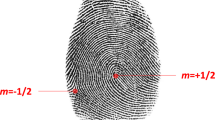Abstract:
The T g of organic liquids confined to nanoporous matrices and that of thin polymer films can decrease dramatically from the bulk value. One possible explanation for this phenomenon is the development of hydrostatic tension during vitrification under confinement that results in a concomitant increase in the free volume. Here we present experimental evidence and modeling results for ortho-terphenyl (o-TP) confined in pores as small as 11.6 nm that indicate that, although there is an important hydrostatic tension in the liquid in the pores, it does not develop until near the reduced T g of the constrained material --well below the bulk T g. Enthalpy recovery for the o-TP in the nanopores exhibits accelerated physical aging relative to the bulk, as well as a leveling off of the fictive temperature at equilibrium values greater than the aging temperature. An adaptation of the structural recovery model that incorporates vitrification under isochoric conditions is able to provide a quantitative explanation for the apparently anomalous aging observed in nanopore confined liquids and in thin polymeric films. The results strongly support the existence of an intrinsic size effect as the cause of the reduced T g.
Similar content being viewed by others
Author information
Authors and Affiliations
Additional information
Received 3 September 2001
Rights and permissions
About this article
Cite this article
Simon, S., Park, JY. & McKenna, G. Enthalpy recovery of a glass-forming liquid constrained in a nanoporous matrix: Negative pressure effects. Eur. Phys. J. E 8, 209–216 (2002). https://doi.org/10.1140/epje/i2001-10072-0
Issue Date:
DOI: https://doi.org/10.1140/epje/i2001-10072-0




